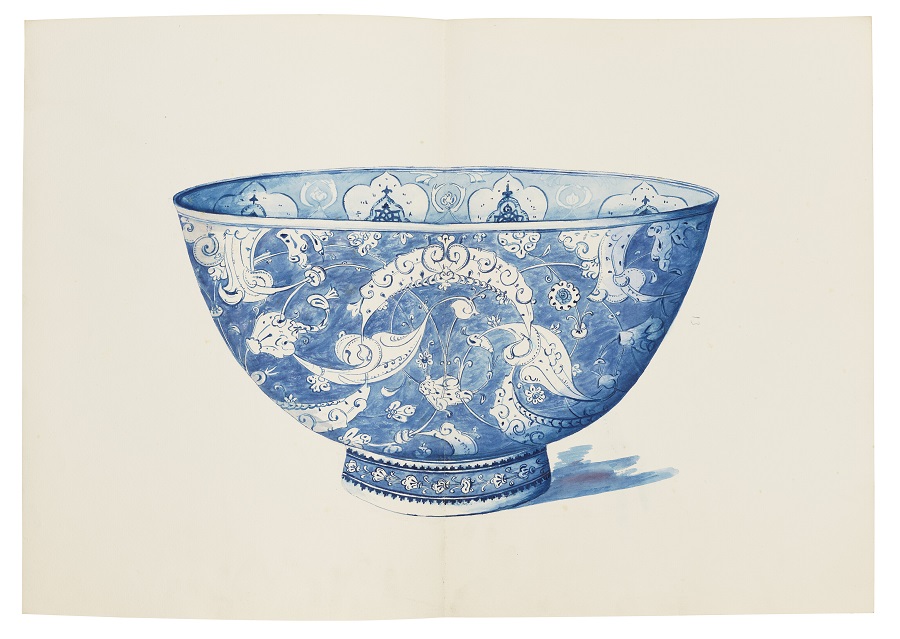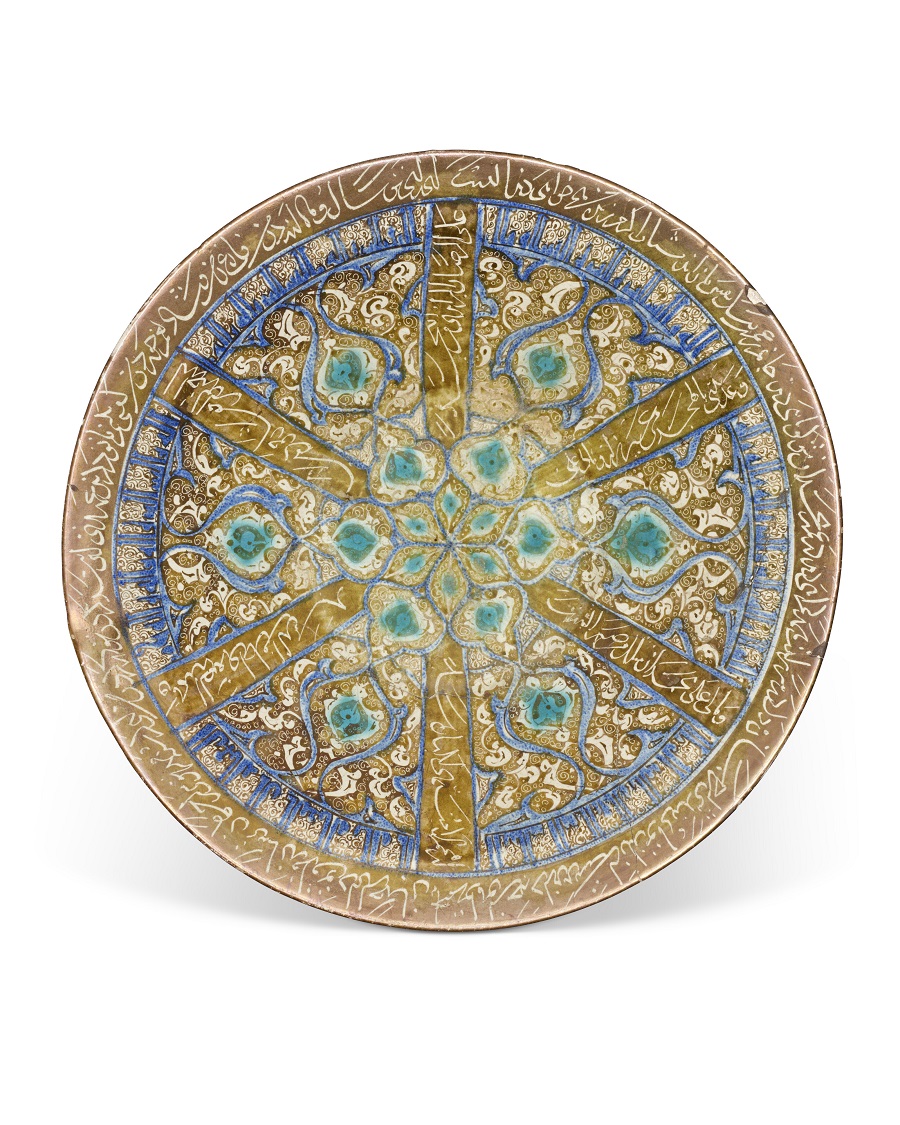LONDON: Christie’s Art of the Islamic and Indian Worlds spring sale will see 261 lots —including paintings, ceramics, metal work, works on paper, textiles, rugs and carpets — go under the hammer at a live auction at their London headquarters on April 25.
Arab News was given an exclusive viewing of some of the works prior to their public pre-sale showing from April 21-24.
Sara Plumbly, Christie’s Head of Department for Islamic and Indian Art, gave her expert insights into some selected pieces.
These included lot 45, an exquisite miniature octagonal Qur’an, dated AH 985/1577-8 AD, which was made in Madinah, the Qur’an has an estimate of $13,000-19,000.
“We very rarely see manuscripts that were copied in the holy cities. So this being copied in Madinah makes it very rare,” she explained.
“It has a Naskh script. This a very steady, cursive script which is relatively easy to read — unlike some of the others. For example, Nastaliq script, which is copied on the diagonal, is much trickier to read. For Qur’ans you would almost always see a Naskh script for ease of reading. Nastaliq is usually reserved for poetic manuscripts,” she said.
This miniature Qur’an would be small enough to carry with the owner on a daily basis, usually around the neck. Alternatively, they would be hung in their silver boxes on an ‘alam (standard or flag) and carried into battle.
Plumbly, who completed her master’s degree in Islamic Art and Archaeology at the University of Oxford, has lived and travelled extensively across the Middle East and North Africa, including extended periods in Egypt, Syria, Lebanon, Saudi Arabia and Sudan.
Another stunning item in the sale is a Watercolor Album depicting a selection of known prestigious and rare Iznik ceramics from the Louis Huth collection. It comprises 44 single and double-page watercolor paintings of Iznik bowls, flasks, ewers and dishes.

Watercolor paintings of Iznik bowls, flasks, ewers and dishes will go under the hammer. (Supplied)
It was also fascinating to see a rare and complete illustrated manuscript copy of the Khamsa of Nizami by 12th century Persian poet Nizami Ganjavi, together with the Khamsa of Amir Khusraw Dihlavi, a 13th century Persian Sufi singer, musician, poet and scholar. The colors in the illuminations leap off the pages as though created yesterday.
Plumbly also pointed out the exceptional workmanship of an early 13th century Kashan pottery bowl, excavated in Iran’s Kashan in 1934.

A Khashan pottery bowl inscribed with three Persian quatrains, or poetic verses. (Supplied)
“This type of Kashan ceramics have a wonderful luster. It’s a very difficult technique to perfect. This bowl has a really beautiful dark gold color which is very well controlled. The condition is remarkable. It’s one of those ‘best of type’ objects,” Plumbly observed.






























